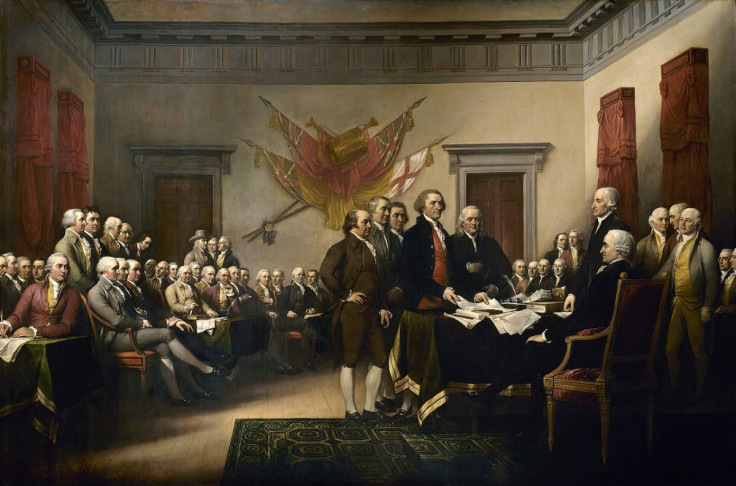Independence Day 2014: Ten Interesting Facts About the Fourth of July

Independence Day, held every year on the fourth of July, is a federal holiday in the United States commemorating the adoption of the Declaration of Independence.
The National Day of the US, it is celebrated with fireworks, parades, festivals, carnivals and concerts, honouring the history and traditions of the country.
To marks the 238th Independence Day, IBTimes UK look at Independence Day facts and trivia:
1. Independence Day was formally declared on 2 July 1776, when Congress approved the final text of the Declaration. It was not signed until 2 August 1776.
2. Three of the first five presidents died on the Fourth of July. Two of them, John Adams and Thomas Jefferson, died on the same day in 1826, which possibly dampened the celebrations somewhat. James Monroe, the fifth president, died five years later in 1831.
3. There is something written on the back of the Declaration of Independence. Upside down at the bottom of the document, reads: "Original Declaration of Independence dated 4th July 1776." The author of the note is unknown, although it is thought that it served as a label.

4. Robert Livingston, a member of the Provincial congress of New York, was one of the committee to draft the Declaration of Independence - but was recalled by his state before he was able to sign it, and missed out on his place in history.
5. Ideologies of the philosopher John Locke, known as the "Father of Classical Liberalism", were particularly influential in the drafting of the Declaration of Independence. Thomas Jefferson used Locke's Social Contract Theory of Government - an Age of Enlightenment model that addresses the legitimacy of the authority of the state over the individual. He wrote in the Declaration that governments arose from "their just Powers from the consent of the people."
6. John Hancock, president of the Second Continental Congress, signed the declaration first, and in truth his vast, elaborate signature left little room for the others. The autograph became so famous that the term 'John Hancock' is still used as a synonym for signature in America today.
7. For the first 15 or 20 years after the Declaration was written, it wasn't celebrated on the date. The Declaration became controversial due to bitter partisan conflicts in the 1790s. The Democratic-Republicans admired Jefferson and the Declaration, but the Federalists deemed the Declaration too anti-British and too French.

8. Fourth of July celebrations became more common as years passed. In 1870, Congress declared July 4 to be an unpaid national holiday for federal employees. In 1938, Congress changed the legislation to be a paid federal holiday.
9. Around 900 copies of the Declaration were created by printer John Dunlap. Only 26 copies, referred to as "The Dunlap Broadsides" are left: 21 are owned by American institutions, two by British institutions and three are privately owned.
10. The Declaration of Independence has five parts: the Preamble, the Statement of Human Rights, Charges Against Human Rights, Charges Against the King and Parliament, and the Statement of Separation and Signatures.
© Copyright IBTimes 2025. All rights reserved.




















